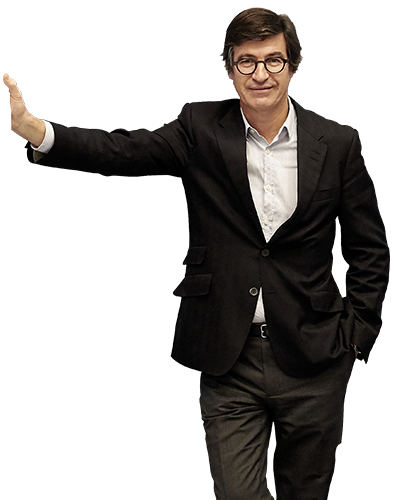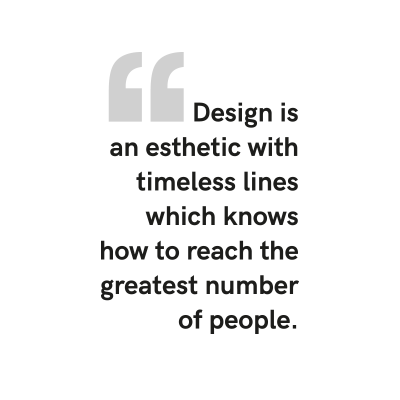A MODERN MAN
Affable and loquacious, this lover of old buildings and contemporary art - a touch dandy - is primarily a man committed to his employees together with whom he continues to write the history of DELABIE. A pride shared, because this successful family saga is first and foremost a story of men and women.

FAMILY SPIRIT
An enterprise of excellence, manufacture began in 1928 in Friville-Escarbotin. For over 30 years, Luc Delabie has co-directed this industrial legacy from the Picardy region with his brothers Jean-Claude and Gérard. In 1992, they were joined by their nephew Patrick, the group’s Technical Director and the fourth generation to take up the flame. And the family venture still has many wonderful chapters ahead. Sent to the “school of merit”, Luc had to prove his competency before becoming director. Understanding the workings, the people and the jobs of each of them “took time”, says with sincere humility he who describes himself as a “go-between”.
Luc Delabie looks straight ahead, analyzes, and deciphers trends. He casts over his company – as he does over the world – an informed and influential eye, without fear of ruptures or big splits. At DELABIE, Luc works on the design of his products, collaborating with his research department and has each project validated internally first before proceeding with its launch. Not solely out of desire, but most importantly out of “necessity”.
Interview with Luc Delabie, Groupe DELABIE
Why did you integrate design into your way of contemplating daily life?
Luc Delabie: We never forget that we are primarily a manufacturer. Design comes next; it’s engraved in our culture. Also, public places have changed a lot in how they are used. More than ever, they reflect the person who runs them, like in the kitchens of a restaurant. The public also has new expectations of these places which must be hygienic, but also esthetic; meaning designed, not as a rupture, but as an architectural and decorative continuity of the place. The reason I became interested in design for DELABIE, is due to necessity. My definition of marketing is the market. You can’t impose anything, you don’t invent anything; the markets decide! Our job is to anticipate it.
Is design in public places a strong trend?
L.D.: This is starting to become the norm in train stations and airports. But there’s a long way to go before this trend becomes a priority in all public places. Hospitals and universities, for example, are still miles away!

You apply a consumer-goods vision to public restrooms, which is a very innovative idea. Is this due to a personal sensitivity?
L.D.: Unlike with fashion and collectibles, for example, restrooms is a sector where the expected shelf-life of a product needs to be very long. You should only be changing faucets once every 15 years. That’s why we gradually decided to give our flagship products a makeover and give them an edge that was more design-oriented, but without losing their DNA. It’s like the Beetle for Volkswagen, for example. In industry, too, you must know how to assemble existing ideas to create something new. Without a past, without history, you can’t invent a thing.
How did you manage to stand out from the competition?
L.D.: It was when we accelerated the stainless steel market! Something clicked in my mind as I was leafing through a book on the world’s most beautiful public restrooms. Stainless steel was present on every page. It struck me as totally obvious. In our field, this material is reputed to be cold and destined for the secure sector, like prisons or mental health. When in fact, it’s a material which patinates in a superb way over time. Even unpatinated and transposed to a welcoming environment, it’s sublime! That’s why architects started using it so rapidly and we continued to grow our presence in the greatest architectural practices across the globe.
Luc Delabie, co-director of DELABIE


